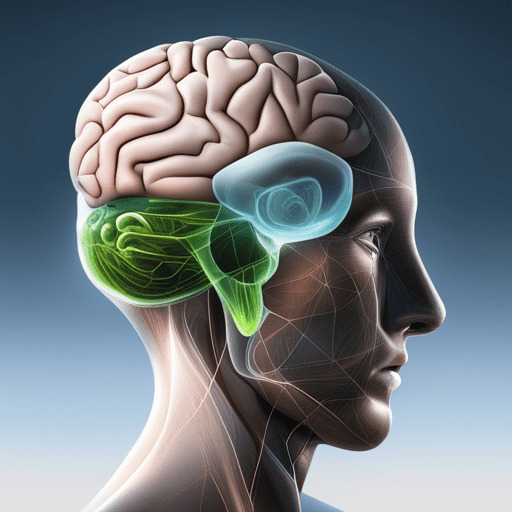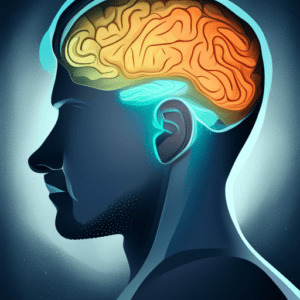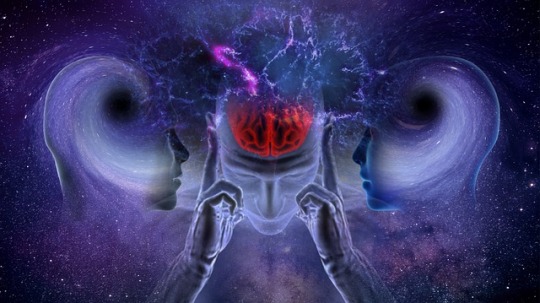#CognitiveScience
Text
The Mysteries of Motivation: Deep Dive into the Brain's Role

Our ideas, feelings, and, most crucially, our motivations all originate in the human brain, a natural miracle. But what is it in the human brain that causes us to take action, strive, and succeed? This article explores the exciting issue of Motivation by delving into the intricate neurological systems that support it. We'll learn about the brain regions that play a part in Motivation, the chemicals that play a part in that process, and the effects that neurological illnesses may have on our drive. We'll also discuss where this field of Study is going and how we can tap into the brain's latent motivational powers.
Which Part of Your Brain is Involved in Your Motivation?

Which Part Of Your Brain Is Involved In Your Motivation?
The Limbic System, the Source of All Drive
The limbic system, or "emotional brain," is fundamental regarding our drive and Motivation. The hippocampus and the amygdala are the only parts of this intricate network that govern our reward and punishment systems. The limbic system is pivotal in memory formation and regulates our emotional lives. The emotional component of memory causes us to anticipate or fear certain occurrences in the future.
The Function of the Basal Forebrain in Memory and Learning
The basal forebrain is engaged in learning and memory and is a crucial component of Motivation. It aids in shaping future behavior by associating it with positive or negative outcomes. This brain region is also essential for maintaining focus, regulating wakefulness, and falling asleep. It's vital for sensory perception and free-willed movement because it supplies the cerebral cortex with acetylcholine.
How Neurotransmitters Like Dopamine Drive Behavior
Dopamine, the Heroin of the Reward System
Dopamine is a neurotransmitter often known as the "feel-good chemical of the brain." When we experience pleasure, our brains produce dopamine, which reinforces and motivates us to pursue similar experiences in the future. Dopamine regulates the secretion of other hormones and is also involved in motor control. Regarding the motivational aspect of reward-motivated behavior, these dopamine pathways are crucial.
The Nucleus Accumbens and the Ventral Tegmental Area Work Together to Process Rewards
The nucleus accumbens and ventral tegmental area (VTA) are inseparable when processing rewards and inspiring action. The anticipation of a reward triggers the release of dopamine in these regions. The nucleus accumbens, among other brain regions, receives dopamine from the ventral tegmental area (VTA), which ultimately causes a sensation of reward or pleasure. This drives us to keep doing things that are rewarding in the first place.
Dopamine's Effects on Mood and Reinforcement Learning
Dopamine is also crucial in the formation of emotional responses and long-term memory. It reinforces existing synapses by reinforcing positive connections in the hippocampus (the brain's learning and memory hub). This step is essential for reward learning to take place, in which we learn to repeat actions that resulted in satisfying results in the past.
Which region of the brain is responsible for our desires and emotions?
Physiology of the Amygdala The Brain's Emotional Control Center
Emotional processing relies heavily on the amygdala, a little almond-shaped structure in the brain. It influences our motives and emotions and plays a pivotal role in the fear and pleasure responses. The amygdala also helps choose which memories to keep and where in the brain to keep them. This metric considers the intensity of the felt impact of an inevitable occurrence. For example, if a person goes through an emotionally taxing experience, the amygdala directs them to file away their thoughts and feelings about that time.
The Motivating Power of the Prefrontal Cortex
The frontal lobe of the brain, known as the prefrontal cortex, is responsible for executive functions such as planning, decision-making, and social conduct. It's essential to our Motivation since it aids in weighing potential gains against costs and deciding how best to proceed. The prefrontal cortex also controls executive tasks, including time management, focus switching, detail recall, self-control, and incorporating previous experiences into current actions.
One of the Brain's Most Important Reward and Motivation Centers
Another important brain region involved in Motivation is the striatum in the basal ganglia. It's active when we're feeling driven to do something since it plays a role in the brain's reward processing system. In addition to its function in motor and movement planning, the striatum is also involved in decision-making, Motivation, reinforcement, and the perception of rewards.
Where Do You Find Your Drive? Frontal Lobe?
Motivation and Self-Control Rely on the Lateral Prefrontal Cortex.
The frontal lobe's lateral prefrontal cortex has a role in self-control. A key component of Motivation, willpower allows us to rein in urges and make choices that support our long-term objectives. Working memory, cognitive flexibility, planning, inhibition, and abstract thinking depend on activity in this part of the brain.
Implications of Frontal Lobe Development on Risk-Taking and Social Acceptance
During this time, a lot of development occurs in the brain's frontal lobe. Teenagers are often highly driven by peer approval and may participate in dangerous activities to get it, which might impact Motivation throughout this development stage. The frontal lobe is also responsible for movement, problem-solving, spontaneity, memory, language, beginning new tasks, judging, resisting temptation, and engaging in social and sexual conduct.
Imbalances in the Brain's Reward System and Psychiatric Illness

Brain's Reward System
The Lateral Habenula Is an Important Part of the Brain's Reward System
The small brain region known as the lateral habenula is pivotal in the brain's reward system. Dysfunction in this region has been associated with mental diseases characterized by excessive aggressiveness, which is thought to encode punishment by suppressing dopamine release. The lateral habenula is engaged in more than only pain processing; it also plays a role in reproduction, eating, sleeping, stress management, and immune function.
Damage to the Brain's Reward System as a Cause of Aggression
Misdirected activation of the brain's reward system in response to aggressive social cues is one possible cause of aggression. When stimulated, some parts of the amygdala may cause anger and aggressiveness, while other portions, when removed, can make laboratory animals more submissive. This points to the amygdala as a critical player in aggressive and violent behavior.
New Frontiers and Unanswered Questions in the Study of Motivation
Basal forebrain involvement in Motivation: a promising area for Study
The basal forebrain is a potential topic for future Study because of its role in learning and memory. Studying this factor's influence on Motivation might light up fundamental questions about cognition and behavior. The basal forebrain plays a role in sleep, waking, attention, and different states of consciousness.
A Look into the Future of Brain Stimulation and Its Effect on Motivation
The potential of brain stimulation methods like transcranial magnetic stimulation to increase Motivation is being investigated. Preliminary studies indicate that activating specific brain regions might boost Motivation and performance. A lack of Motivation typically characterizes depression and attention deficit hyperactivity disorder (ADHD). Therefore, this might lead to novel therapies for both disorders.
Using Your Brain to Its Full Potential Through Inspiration

Using Your Brain To Its Full Potential Through Inspiration
Cognitive Improvement: Fueling Your Brain with Inspiration
Increase your brain's Motivation by engaging in cognitive improvement practices like brain training activities and mindfulness meditation. Motivated individuals may benefit from these methods because they enhance the brain circuits responsible for Motivation. For instance, brain training activities help you improve your memory and problem-solving abilities, simplifying planning and accomplishing your objectives. In contrast, mindfulness meditation can help you focus on your goals by lowering stress and worry.
Motivation Improvement Through Mental Exercise

Motivation Improvement Through Mental Exercise
Puzzles, memory games, and other forms of mental exercise have been shown to boost Motivation and cognitive performance. These mental workouts help strengthen brain areas responsible for processing Motivation and reward. Doing these things will improve your brain's Motivation and help you reach your objectives.
An Intricate Tango Between the Brain and Motivation
Summary: The Brain's Hidden Role in Optimal Motivation
The brain's part in Motivation involves complex structures, chemicals, and neuronal connections. Each region of the brain, from the primitive brain to the more evolved prefrontal cortex, is essential in determining our choices and actions. Learning about these processes may help you get insight into your motivations and use your brain more effectively to accomplish your objectives.
Exploring the Path Forward in Our Knowledge of What Drives People
We set out on a path of research and invention as we strive to decipher the secrets of the brain and Motivation. Discoveries, enhanced therapies, and a better knowledge of the human brain are all in store for motivational research in the years to come. The Study of Motivation is an academic exercise and a personal search for insight.
Read the full article
#BasalForebrain#Brain#CognitiveScience#Dopamine#EmotionalBrain#LearningandMemory#LimbicSystem#Motivation#Neuroscience#PrefrontalCortex#Psychology#RewardSystem#whichpartofyourbrainisinvolvedinyourmotivation?
2 notes
·
View notes
Text
Unlock the secrets of the mind with Psychology Tuition in Singapore by Kiya Learning. Whether you're studying for exams or curious about human behavior, our experienced tutors offer personalized instruction and support.
#PsychologyClassesSG#SingaporePsychology#PsychologyEducation#BehavioralScience#SingaporeEducation#PsychologyTuition#PsychologyWorkshops#SingaporeSchools#MentalHealthEducation#CognitiveScience#SingaporeLearningHub#PsychologyEnrichment#EducationForAll#MindAndBehavior#PsychologySkills#UnderstandingTheMind#PsychologicalWellness#SingaporeMindfulness#PsychologyCommunity#EmotionalIntelligence
0 notes
Text
Do Babies Have Consciousness? | Psychology Today
Bayne, Frohlich, Cusack, R., Moser, Naci, Schleger, Weiss, Sippel, Semeia, Preissl, Magneto have published research suggesting consciousness in newborn infants and even fetuses, thus casting new light on the development of human brains
image: Shutterstock
What it might be like to see the world as a baby.
Source: Do Babies Have Consciousness?
This is fascinating! Joel Frohlich, Ph.D, and a team of neuroscientists (see references below the article) recently published a paper in the journal Trends in Cognitive Science suggesting that most likely even 3rd trimester fetuses as well as newborn are likely to have consciousness that…

View On WordPress
#brain#CognitiveScience#Consciousness#EN#Fetus#infantconsciousness#InfantPsychology#perception#Pregnancy#PsychologyToday#research#StimulusProcessing
0 notes
Text
youtube
Cats! Casablancan Cats! How many Casablancan cats can you count?
On our recent trip to Casablanca, I filmed all the cats I saw on the street and called it my Cat Collection. Now you get to enjoy this collection in the guise of the Official Lyric Visualiser for my new single AI (Animal Intelligence). Enjoy.
#straycats#casablancancats#australianmusician#evolutionarypsychology#partswork#jungianarchetype#cognitivescience#Youtube
0 notes
Text
Unlocking the Mind: Navigating the Neuroscience of Self-Perception, Deception, and Ethical Integrity
Unlocking the Mind: Navigating the Neuroscience of Self-Perception, Deception, and Ethical Integrity
I. Introduction
Positive self-suggestion, often referred to as self-affirmation or self-talk, involves consciously directing one’s thoughts and beliefs towards encouraging and supportive narratives about oneself. It encompasses affirmations, visualization techniques, and constructive self-reflection aimed at boosting self-esteem, confidence, and motivation.
On the other hand, lying entails…

View On WordPress
#Authenticity#BrainResearch#CognitiveScience#CommunicationSkills#Deception#EmotionalIntelligence#EthicalIntegrity#EthicalLeadership#GrowthMindset#MentalWellbeing#MoralReasoning#Neuroethics#Neuroplasticity#NeuroScience#PersonalDevelopment#PositiveSelfTalk#Resilience#SelfImprovement#SelfPerception#TrustBuilding
0 notes
Video
youtube
Unlock Your Mind | Daily Wisdom Dose - Psychological Facts 🤓 #facts #quo...
#DailyWisdomDose#psychologicalfacts#unlockyourmind#Psychology#MindBoggling#HumanMind#BehaviorInsights#cognitivescience
0 notes
Text
This article represents an interdisciplinary approach, weaving together philosophy, education, psychology, and technology to explore complex questions about intelligence, consciousness, and the future of AI.
#AbstractConcepts#ArtificialIntelligence#ChineseRoomArgument#CognitiveScience#ConsciousnessDebate#HumanLikeAI#InterpretationOfAI#JohnSearle#LanguageProcessing#PhilosophicalImagery#Philosophy#SimulatedComprehension#SymbolManipulation#ThoughtExperiment#Understanding#frnwh
1 note
·
View note
Text
Body and Mind: Exploring Subconscious Memory
hile conventional wisdom often places the seat of memory within the brain, emerging concepts such as muscle memory and cellular memory invite us to explore a more holistic perspective. This article embarks on an enlightening exploration, drawing from the
Body and Mind: Exploring Subconscious Memory
Why does bodywork work to treat traumatic memories?
The concept of the subconscious mind residing in the body, often referred to as muscle memory or cellular memory, is a fascinating idea that blends elements of psychology, neuroscience, and holistic health practices. While it’s not entirely synonymous with traditional views of the subconscious mind,…

View On WordPress
#BodyAwareness#BodyCenteredPsychotherapy#BodyMindIntegration#BodyWisdom#CellularMemory#CognitiveScience#EmbodiedCognition#EmotionalHealing#EmotionalImprints#EmotionalProcessing#EmotionalRelease#EmotionalResilience#EmotionalWellBeing#HealingJourney#HealingTrauma#HolisticApproaches#HolisticHealing#MemoryConsolidation#MemoryFormation#MemoryImprints#MemoryIntegration#MemoryProcessing#MemoryRecall#MemoryRetrieval#MemoryStorage#MemoryTriggers#MentalHealthJourney#MentalWellness#MindBodyBalance#MindBodyConnection
0 notes
Text
The nature of consciousness

The nature of consciousness is a complex and fundamental topic in philosophy, neuroscience, and cognitive science. It refers to the subjective experience of being aware and having mental states, such as sensations, thoughts, and emotions. Consciousness is what makes it possible for us to perceive the world, think, reason, and have a sense of self-awareness.
There are various theories and debates surrounding the nature of consciousness. One key question is the "hard problem of consciousness," as coined by philosopher David Chalmers, which asks why and how subjective experiences arise from physical processes in the brain.
Some theories suggest that consciousness is an emergent property of complex information processing in the brain, while others propose that it may have a deeper, non-physical basis beyond the realm of neuroscience and the physical world. Some argue that understanding consciousness requires considering not just brain functions but also the broader context of our embodied experience and interactions with the environment.
Throughout history, different cultures and philosophical traditions have offered diverse perspectives on consciousness, ranging from spiritual and mystical interpretations to more materialistic and scientific viewpoints.
Despite significant advancements in neuroscience and cognitive studies, the nature of consciousness remains a topic of ongoing investigation and philosophical contemplation, raising profound questions about the nature of reality, the mind-body relationship, and the limits of human understanding.
#Consciousness#NatureOfConsciousness#Philosophy#Neuroscience#CognitiveScience#HardProblemOfConsciousness#MindBodyProblem#SubjectiveExperience#EmergentProperty#MysticalPerspectives#MaterialisticPerspectives#BrainFunction#SelfAwareness#HumanUnderstanding
0 notes
Text
Beyond Boundaries
The Dawn of Unified Consciousness Intelligence AwakeningIntroduction:In the tapestry of human cognition lies an intricate interplay of intelligences that shape our experience of reality. Often viewed through the lens of Howard Gardner’s Multiple Intelligences, our cognitive capacities are segregated into distinct threads. However, ancient wisdom from the East introduces the possibility of a…

View On WordPress
#CognitiveScience#CollectiveConsciousness#GlobalUnity#HumanPotential#IntelligenceAwakening#MultipleIntelligences#SpiritualAwakening#TranscendentalState#Turiyatitta#UnifiedConsciousness
0 notes
Link
#cognitiveload#cognitivescience#userresearch#users#ux#ux tips#ux design#psychology#design#usability#designthinking#userexperience
1 note
·
View note
Text
Mindfulness in education
Introduction
Mindfulness has taken the world by storm, and its popularity has spread to many different areas of life, including education. Mindfulness in education is the practice of teaching students to become aware of their thoughts, emotions, and environment, and to respond to them with kindness and compassion. It is a valuable tool that can help students develop the skills needed to cope with stress and make better decisions. In this blog post, we will examine the benefits of mindfulness in education, the science behind it, and how it can be incorporated into the classroom.
The Benefits of Mindfulness in Education
Mindfulness has been proven to benefit both teachers and students in a variety of ways. For students, practicing mindfulness has been linked to improved academic performance, better focus, and a greater ability to regulate emotions. It can also help students to develop better relationships with peers and teachers, and increase their self-awareness and self-esteem.
Teachers who practice mindfulness can also benefit from improved relationships with students, greater understanding of student behaviour, and improved classroom management. Additionally, mindfulness can help teachers to reduce stress and burnout, and increase their own wellbeing.
The Science Behind Mindfulness
Mindfulness is based on the principles of cognitive science, neuroscience, and psychology. Neuroscientists have found that practicing mindfulness can lead to changes in the brain, including an increase in grey matter in regions associated with memory, learning, and emotion regulation. Additionally, mindfulness has been found to reduce stress, anxiety, and depression, while increasing focus and attention.
It is also important to note that mindfulness is not a one-size-fits-all solution. Rather, it is a set of skills that must be learned, practiced, and adapted to the individual.
Incorporating Mindfulness into the Classroom
Incorporating mindfulness into the classroom can be a challenge. The best way to do this is to start small and focus on teaching the basics. Begin by introducing mindfulness as a tool to help students cope with stress and build self-awareness.
From there, you can start teaching mindfulness through activities such as guided meditations, breathing exercises, and mindful movement. You can also use games and activities to help students practice being mindful.
Finally, it is important to provide a safe and supportive environment for students to practice mindfulness. This means creating a space free from judgment and criticism, and encouraging students to share their experiences and feelings.
Conclusion
Mindfulness in education is a valuable tool that can benefit both teachers and students. It has been proven to improve academic performance, focus, and emotional regulation, while reducing stress and burnout. Additionally, it can help students to develop better relationships with peers and teachers, and increase their self-awareness and self-esteem.
Incorporating mindfulness into the classroom is not always easy, but it is possible. By taking it slow and focusing on the basics, teachers can create an environment in which students can learn and practice the skills of mindfulness.
Ultimately, mindfulness can be an invaluable tool for improving the wellbeing of both students and teachers, and creating an environment of understanding and compassion.
#Mindfulness#Education#CognitiveScience#Neuroscience#Psychology#GreyMatter#Memory#Learning#EmotionRegulation#Stress#Anxiety#Depression#Focus#Attention#SelfAwareness#SelfEsteem#Relationships#ClassroomManagement#Burnout#GuidedMeditations#BreathingExercises#MindfulMovement#Games#Activities#Judgement#Criticism#Compassion
0 notes
Photo

The Entangled Brain - How Perception, Cognition, and Emotion Are Woven Together By Luiz Pessoa I've been waiting a long time to read this. 🧠 #Neuroscience #neurosciencestudent #neuroscienceresearch #brainfood #cognitivescience #neurosciencenerd #newbook #brainsaresexy #booksarelife #bookstoread #psychology #quote_of_the_day #bookarts #readathon #readallthebooks #bookandcoffee #bookadict #giftforstudents #bookaddicts #bookbag #readbook #bookaholics #giftart #quoteday #readaloudrevival #readersgonnaread #readacrossamerica #bookalicious www.hannahcrazyhawk.com (at Portland, Oregon) https://www.instagram.com/p/CmAmw3BrBAt/?igshid=NGJjMDIxMWI=
#neuroscience#neurosciencestudent#neuroscienceresearch#brainfood#cognitivescience#neurosciencenerd#newbook#brainsaresexy#booksarelife#bookstoread#psychology#quote_of_the_day#bookarts#readathon#readallthebooks#bookandcoffee#bookadict#giftforstudents#bookaddicts#bookbag#readbook#bookaholics#giftart#quoteday#readaloudrevival#readersgonnaread#readacrossamerica#bookalicious
0 notes
Text
Lucas has a conversation with one of the world’s most advance AIs. In this episode of More To The Story, see how the GPT-3 Advanced language model responds to questions about the Bible, faith, and Jesus. This fascinating conversation will make you laugh, and question the nature of intelligence.
#GPT-3#AI#GPT3#chatbot#artificialintelligence#machinelearning#neuralnet#neuralnetwork#Algorithm#bots#Cognitivescience#Deeplearning#NPL#NaturalLanguageProcessing#Semanticanalysis
0 notes
Text
The Secrets of Memory: A Dive into Cellular Mechanisms and the Papez Circuit
In the vast realm of neuroscience, the mystery of memory formation has captivated researchers for decades. As we delve into the intricacies of the brain, the hippocampus and the Papez circuit emerge as key players in the orchestration of memory. In this exploration, we aim to unravel the cellular and molecular mechanisms that underlie memory formation, shedding light on the fascinating interplay…

View On WordPress
#BrainWaves#CellularMechanisms#CognitiveScience#HippocampusInsights#MemoryFormation#MemoryScience#NeuralCircuits#NeuroscienceResearch#Neurotransmitters#PapezCircuit#SynapticConnections
0 notes
Video
youtube
Daily Wisdom Dose - Psychological Facts 🤓 #facts #quotes #fascinatingfacts
#DailyWisdomDose#psychologicalfacts#unlockyourmind#Psychology#MindBoggling#HumanMind#BehaviorInsights#cognitivescience
0 notes